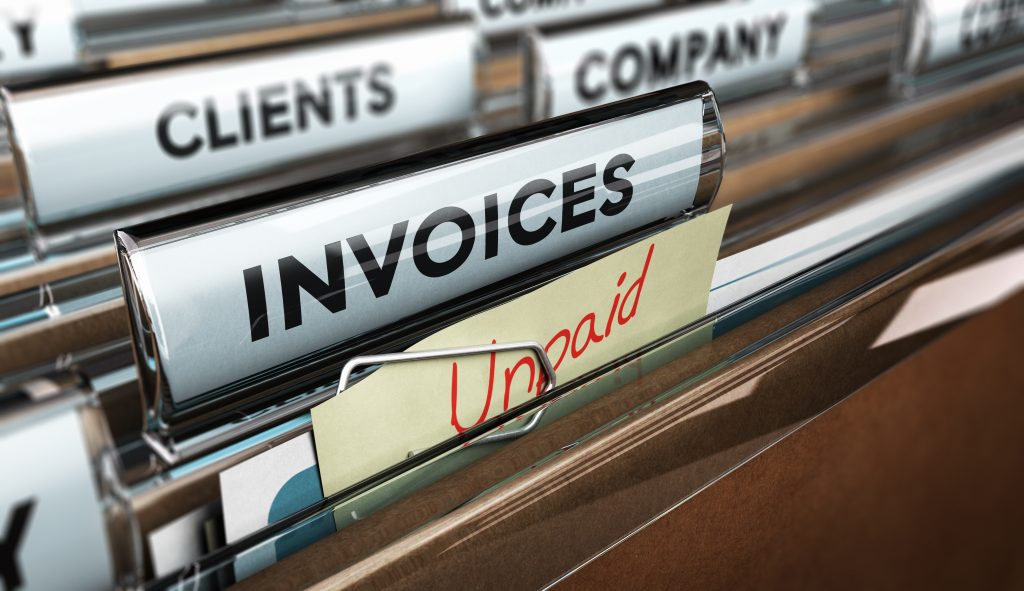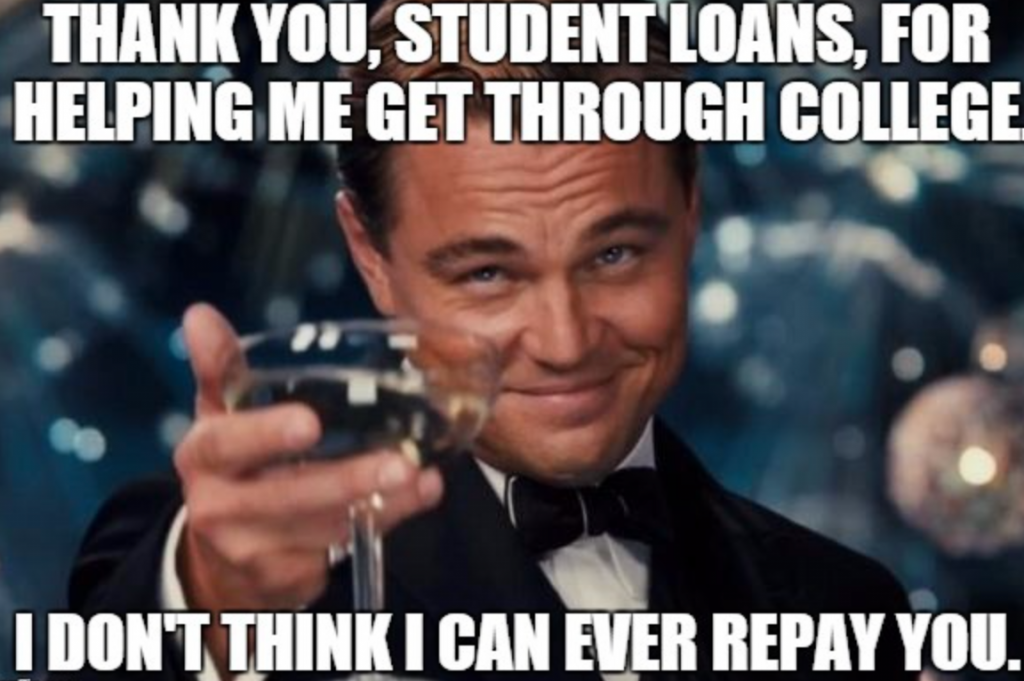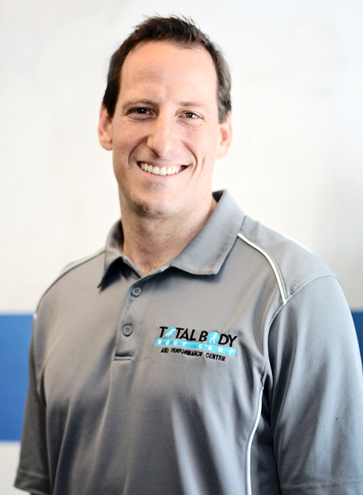Most people – but especially fitness professionals – are boneheads (or dare I say: dumbbells) when it comes to financial savviness and literacy.
It’s just a topic we’re never taught.
Ever.
Most fit pros have more knowledge in how to transcribe their latest Reels video into Klingon than understanding the difference between a SEP and Roth IRA.
More to the point, when it comes to debt (specifically: how to get and stay out of it), many people prefer to treat it like a toddler having a temper tantrum.
(puts fingers into ears)
La-la-la-la-la-la…I can’t hear you.
It’s intimidating, scary, and sometimes can be a real asshole (to put it lightly)
Today, in PART TWO of fitness financial expert Billy Hofacker‘s THREE part series, he provides some helpful insight on debt and how to approach it responsibly and within reason.
Enjoy!

Coach & Grow: Part 2: A Simple Plan For Debt Destruction
Part 1 of Coach and Grow Rich was all about developing a money mindset. This post will deal with a topic that may be uncomfortable for some, debt.
It’s an area that I know all too well as my wife and I scraped our way out of a massive amount (more than 100K) of debt 10 years ago. I’ve since helped hundreds of Fit Pros get on a plan to destroy their own debt. I’m not going to lie to you and tell you it’s easy but neither is losing weight, getting stronger, or building a business.
It takes time.
It takes hard work.
Mostly, it takes being consistent with a simple plan.
You’ll hear financial “experts” talk about good debt vs. bad debt. An example of “good debt” would be a business loan because you can potentially earn more as a result. “Bad debt” would be something that goes down in value, like a car.
My opinion is that all debt carries a risk and for that reason I consider myself a “no debt” guy.

If there is anything the pandemic has made clear to us, it’s the importance of having our financial house in order. Does the debt you have (personal or business) make you feel as though you are stuck in the middle of the sea with no life preserver?
That’s exactly how I felt.
Then I started learning more about finances.
What’s worse than being in debt is working exceptionally hard to get out of it only to fall back into it. It’s like someone gaining and losing the same 50 pounds repeatedly.
One of the ways to avoid staying in debt is to understand why it happened in the first place. Of course, we can agree that it’s the result of poor money management. That’s the first step – taking personal responsibility.
However, it goes deeper.
Like I described in Part 1, we all have root beliefs about money that stem from our upbringing and experiences. Here are some examples of beliefs that will keep us stuck.
- “Debt is normal. How else would I buy things?”
- “I don’t even know how much debt I have so I guess a little more won’t hurt.”
- “This is just the way it is for me. Getting out of debt isn’t a reality for me so I might as well embrace it.”
- “I have so much debt already so an extra $100 wouldn’t really matter, would it?
These distorted beliefs are similar to the ones our clients have about their fitness. We need to uncover them and label them for what they are, false!
If you have debt, there is no reason to be ashamed.
The average person carries a credit card balance of $6200.
If you’re like me, you’ve looked at people with big problems and wondered how they got there. The solutions seem so obvious: “Stop eating gallons of ice cream at a time” or “Get out of that unhealthy relationship.” When it comes to our own problems, the solution doesn’t seem so clear. That was the case with me. It all started with one bad decision, putting a household item on a credit card and not paying the bill.
From there it snowballed into a massive problem.
With that said, people who are financially successful know that one of the keys to building wealth is to get and stay out of debt. The good news is that there is a way out regardless of your current situation.
Hopefully, you already understand the value of moving towards financial freedom by becoming debt free. Just in case you’re not convinced, let me ask you a few questions:
❓ If you didn’t have to make any debt payments, how much money could you save every month?
❓ If you weren’t strapped with debt, how much better could you live with the same income?
❓ How quickly could you become wealthy?
❓ How much would you be able to impact others?
The Top 2 Methods
There are generally two schools of thought when it comes to paying down debt.
The first is known as the higher interest or avalanche method.
The second is known as the debt snowball.
With the avalanche method, or the higher interest method, the debts would be paid down in order from highest to lowest interest.
This method makes mathematical sense.
With the debt snowball, the debts would be paid in order from lowest to highest balance.
So which is better?
At some level, comparing debt elimination plans is like comparing nutrition plans. The one that works best is the one you follow.
With that said, the debt snowball allows you to rack up wins quickly, which helps create positive momentum. This is a huge advantage for someone who may already feel a little discouraged by their financial predicament.
Here are the steps to applying the debt snowball.
1️⃣ Stop Borrowing Money
If you continue to borrow money while trying to eliminate your debt, you’ll be fighting an uphill battle.
This is where a spending plan is crucial.
2️⃣ List Your Debts From Lowest to Highest Balance
Pay special attention to this step. Don’t leave any debts out and let them slip between the cracks. Arrange your debts in ascending order with the smallest remaining balance first and the largest last.
You would ignore the interest rate.
3️⃣ Pay All of the Minimum Payments on Each Debt Listed
4️⃣ Throw Any Extra Money Above Toward the Minimum Payments at the Next Lowest Balance
Ideally you would have a timeline for when each debt will be paid off. Accelerate you debt elimination plan by looking for any extra money to pay towards your focus debt (i.e. the one with the lowest balance). If you can’t find extra money, think of ways to increase your income.
5️⃣ Set Your Debt Elimination Date
Write down the date you will be debt free (other than a possible mortgage).
Visualize it.
Keep moving towards your goal no matter what.

Many people who use this method get excited as a result of the early wins and end up finding additional ways to put more money towards their snowball. The key is using the minimum payment you had for an eliminated debt and adding it to the next one, thus creating your debt snowball.
Regardless of the method you choose, the first step is to get clear about your reality. It’s astonishing how many people have no idea how much debt they have.
I created this Debt Destruction tool for you to create your plan.
If you want to throw up, visit bankrate.com/brm/calc/minpayment.asp and see how much of your minimum credit card payment actually goes toward the balance and how long it will take to pay off.
What’s cool is you can adjust the numbers and see what a difference lower APRs (interest %) and higher monthly payments can make.
In some cases you can save years of payments and thousands in interest.
Business Considerations
Many people who agree that personal debt is destructive believe that business debt is different. The truth is, business debt can be just as harmful and the same rules should apply.
Don’t fall into the lie that you need to carry a credit card balance or borrow money to grow your business. Having a debt free business allows you to designate some of your cash for future growth, take advantage of opportunities that present themselves, and be more generous.
You may think that it’s better to prioritize paying down your business debt if you have both business and personal debt.
Actually, one of the best things you can do for your business is to improve your personal finances. Many businesses suffer or even go out of business because an owner’s personal financial house was not in order.
The bottom line is that you need a plan to eradicate both personal and business debt.
One consideration with business debt is you’ll want to make sure you pay attention to your cash flow. Covid-19 has reminded us of the importance of having “cash on hand.”
I would recommend saving at least one month of business reserves before aggressively paying down business debt. Once you have your one month of reserves, you can allocate a percentage of extra income (after paying yourself) to debt elimination and the rest toward building the reserves further.
You’ll need a lot; think 3-6 months.
Wrapping Up
While it may sound unsophisticated or outdated, personal finance and business are much simpler than people make them out to be. If you do the basics with focus and consistency, over time you’ll be amazed by what you can achieve.
*A helpful tool – One of the keys to achieving financial success is tying your debt destruction plan to your entire Financial Freedom Plan. Whether or not you have debt, the Power Spending Plan makes the whole process less stressful.
About the Author
Many fitness professionals get stuck in the day to day and have little to show for their hard work. Billy Hofacker helps them get on a plan to achieve financial freedom. You can learn more by listening to the Your Fitness Money Coach podcast or visiting www.yourfitnessmoneycoach.com.




